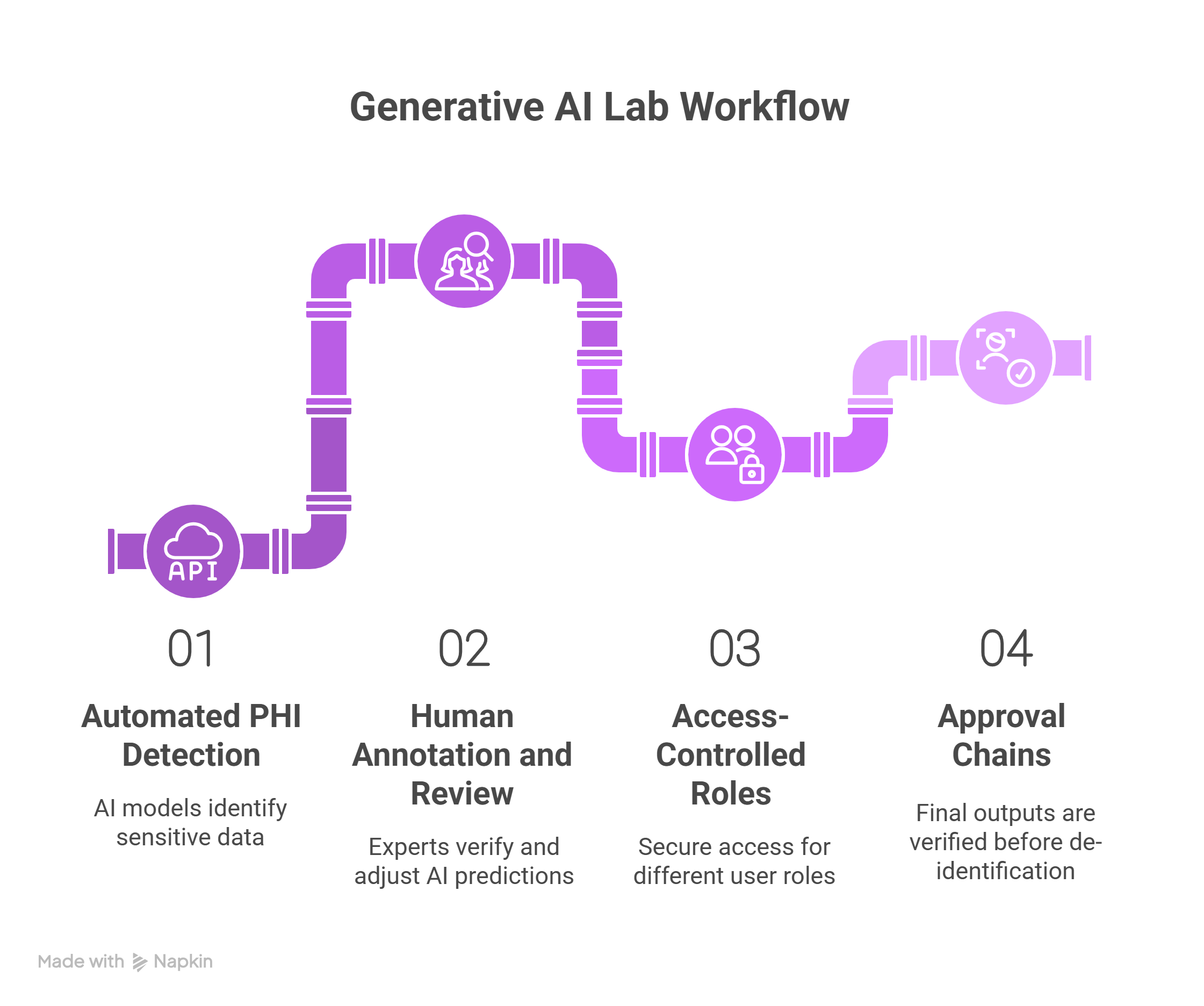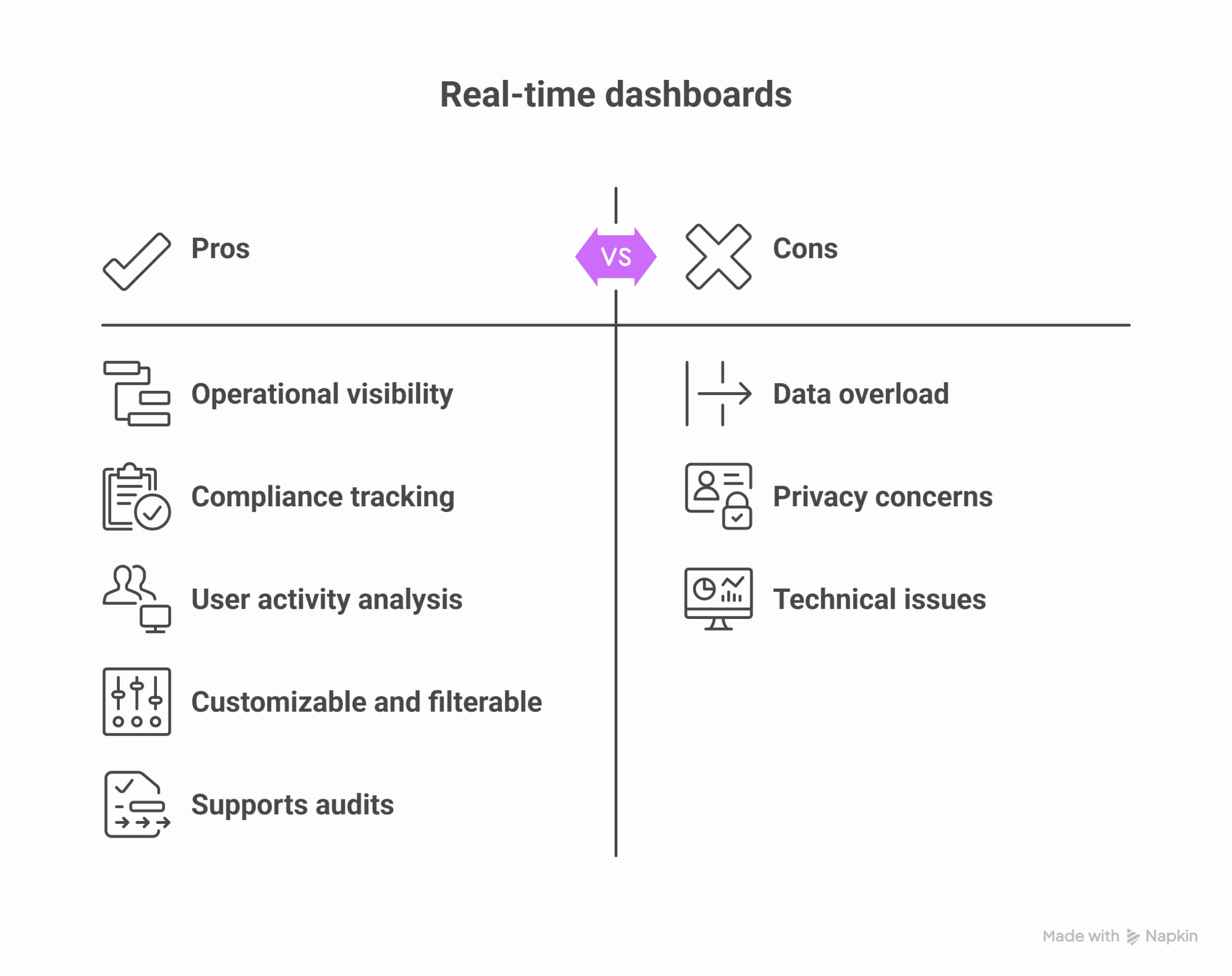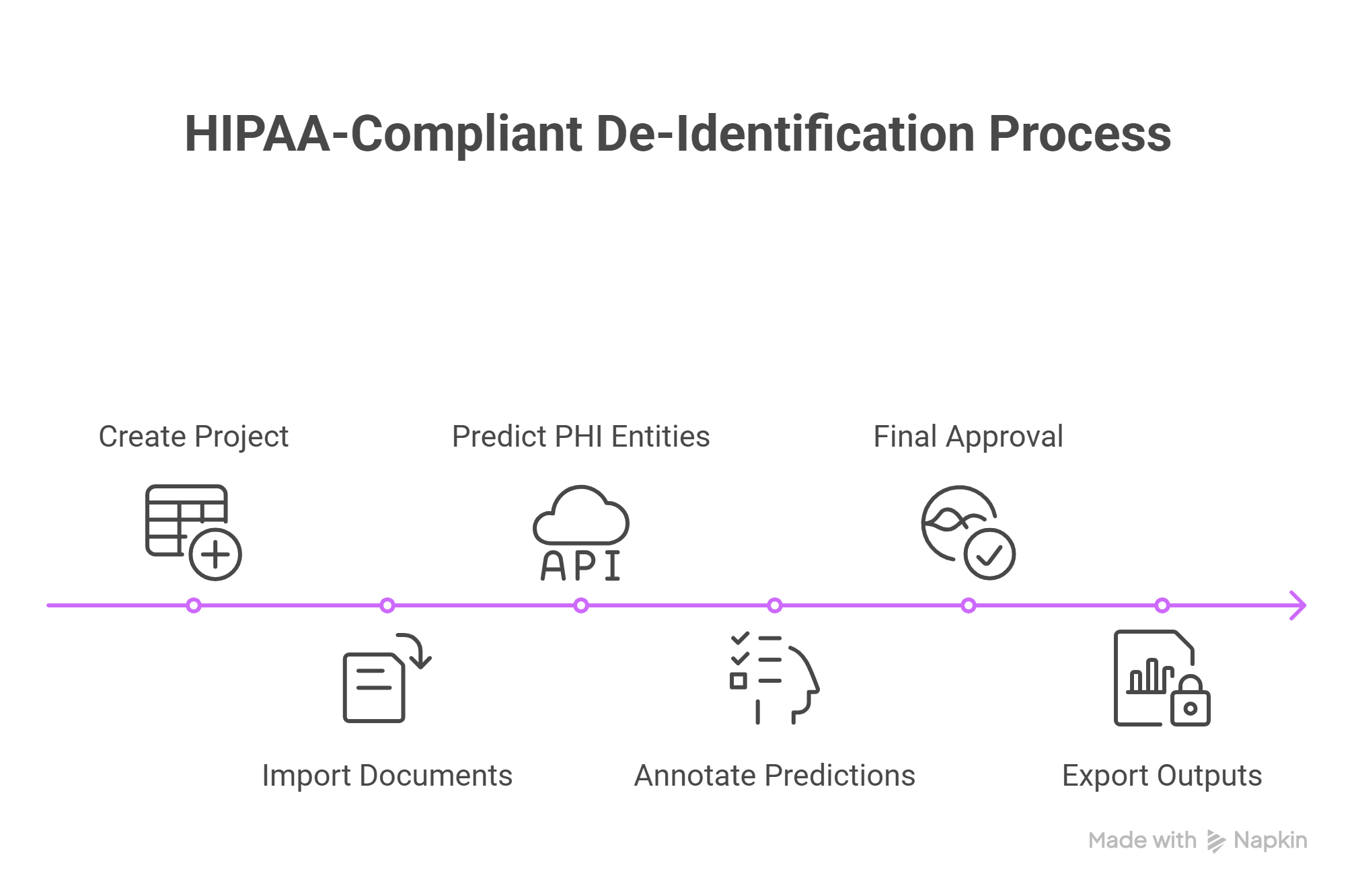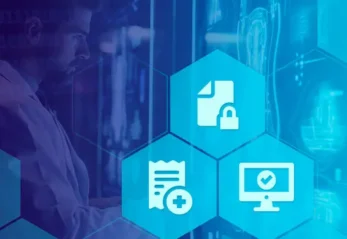What is HIPAA-compliant de-identification with human-in-the-loop AI?
HIPAA-compliant de-identification with human-in-the-loop (HITL) workflows combines AI predictions with structured human oversight to ensure sensitive health data is anonymized with the highest accuracy. Within the Generative AI Lab, this process is fully auditable and does not require code.
Users can create de-identification projects, import documents, apply AI models, assign annotators and reviewers, and manage tasks through a secure, no-code interface. Every step, from prediction to review to export, supports HIPAA requirements through transparency and traceability.
If your organization handles protected health information (PHI), exploring HITL workflows is not optional, it’s essential.
👉 Start your compliance journey with a personalized demo of the Generative AI Lab.
How does the Generative AI Lab support HITL workflows for PHI data?
The Generative AI Lab provides an end-to-end HITL workflow that includes:
- Automated PHI detection using pre-trained de-identification models
- Human annotation and review to verify and adjust AI predictions
- Access-controlled roles for annotators, reviewers, and project managers
- Approval chains that ensure final outputs are verified before de-identification
These workflows empower healthcare teams to safely de-identify patient data while maintaining full oversight.
By integrating AI and human expertise, you improve not just speed, but trust, precision, and compliance.
👉 Book a demo to see how this workflow aligns with your compliance protocols.
What audit capabilities ensure HIPAA compliance?
Auditability is built into every layer of the Generative AI Lab. The platform:
- Captures immutable audit logs of every user action including data access, changes, and exports
- Tracks role-based activity to ensure only authorized personnel access PHI
- Retains logs for regulatory review, with filtering by project, user, date, and event type
HIPAA mandates accountability. These audit features make that accountability real, actionable, and reviewable, at any time.
What insights do real-time dashboards provide?
Built-in dashboards offer operational and compliance visibility through:
- Project activity heatmaps to highlight engagement trends
- User activity tracking for reviewing who did what, when, and why
- Export and deletion history to flag potential compliance risks
- API request analysis for identifying usage patterns and anomalies
Dashboards are customizable and filterable, giving teams the flexibility to investigate issues or validate workflows with ease.
Whether you’re conducting an internal audit or managing cross-functional teams, these dashboards keep compliance in sight.
How easy is it to enable audit logging?
Enabling audit logging is straightforward. Simply adjust the deployment script with two flags to:
- Activate audit logging globally
- Deploy an Elasticsearch backend for log storage
Once configured, the system immediately begins tracking all relevant actions for real-time monitoring and retrospective audits.
There’s no need for complex setup or custom engineering. Compliance readiness is built in by default.
How does the HITL review process work in practice?
Here’s how it works in the Generative AI Lab:
- Create a project and assign team members with defined roles
- Import clinical documents from local or cloud storage
- Use pre-trained models to predict PHI entities
- Annotators review predictions and correct as needed
- Reviewers perform final approval or request revisions
- De-identified outputs are exported securely
Each stage is tracked and auditable, ensuring full accountability and high-quality results.
FAQs
How does this platform ensure HIPAA compliance? It enforces access control, tracks every interaction, and retains audit logs for six years in line with HIPAA mandates.
Can I export the de-identified data? Yes. Once reviewed and approved, data can be exported in CSV or other formats.
Do I need technical skills to use the platform? No. The interface is fully no-code and designed for ease of use by clinical teams.
How customizable are the workflows? Workflows are fully configurable to match team structures and compliance protocols.
What happens if the model misses a PHI element? Annotators can edit or reject predictions, ensuring nothing is missed before approval.
Supplementary Q&A
Why is human review critical in PHI de-identification? While AI models are highly efficient, human oversight ensures edge cases and ambiguities are addressed, preventing both under- and over-redaction of sensitive data. This safeguards both compliance and data utility.
What makes audit logs essential in healthcare AI? Audit logs provide the traceability required to validate regulatory compliance, investigate incidents, and build trust. In regulated environments like healthcare, they are not optional but essential.
Can this solution scale for enterprise-wide deployments? Yes. With role-based access, template-driven project creation, and centralized dashboards, the Generative AI Lab scales efficiently across departments and use cases.
Ready to build compliant AI workflows that scale?
Join the growing number of health systems, payers, and tech providers using the Generative AI Lab to streamline HITL de-identification and meet regulatory standards.
👉 Request a live demo to see how it works.
































